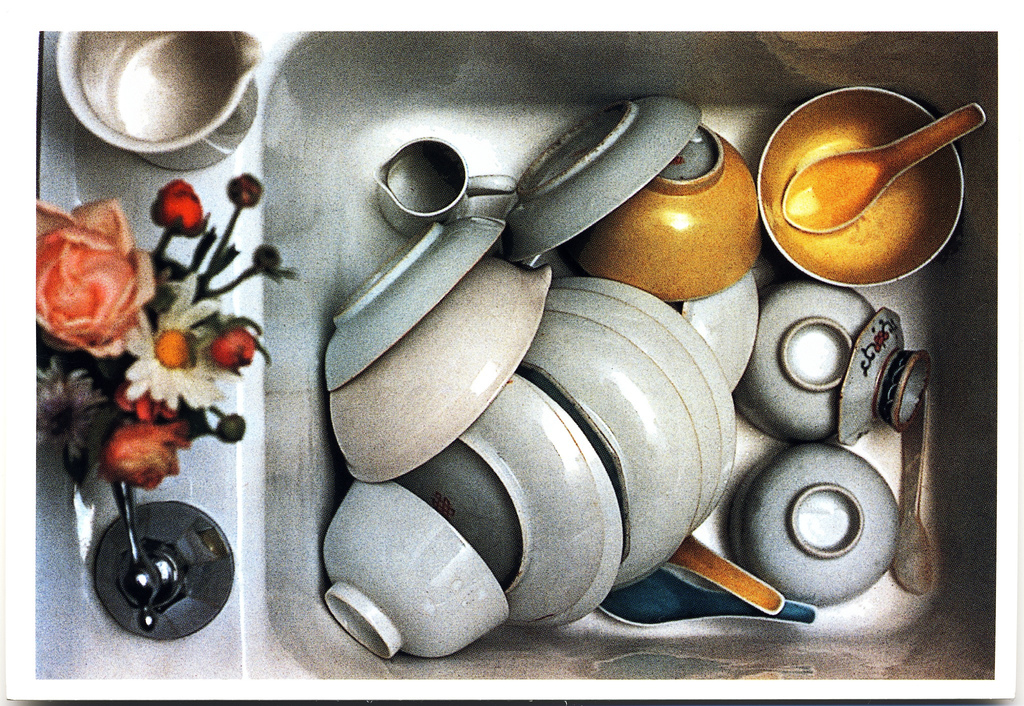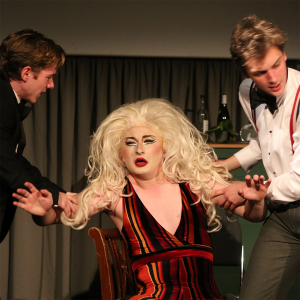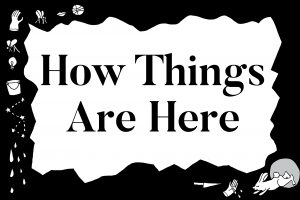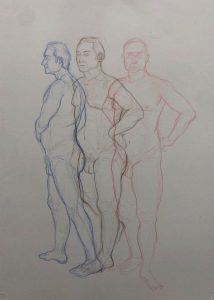
Rebranding Boredom: How boredom can be a commercial venture
by Elizabeth Culliford | March 1, 2015
The patient cocks his thumbs out and draws his fists to his chest. Music tinkles in the back of the advert as the camera retreats and he turns, with his penis tucked between his legs, his hands performing a charade of nipples. Other patients flick at a light switch and a fountain of water is run from a tap to the puddled floor. One man pings a nurse’s bra strap as she bends over. A woman’s voiceover tells us that the devil makes work for idle thumbs. “Keep yours busy. Text another Virgin Mobile for 3p.”
Dickens didn’t invent boredom, but he was the first to write the word in his 1853 Bleak House, a serial about an inert Chancery case in a mud-drenched London, and the “chronic malady of boredom”. Recently, Motorola honed the term to fit our restless world and began using the term ‘microboredom’ for the thin slices of free time from which they could offer customers relief in the form of Tetris and Snake.
Seneca talked of the feeling as a kind of nausea, a diagnosis that lingers on in the complaint of being “sick of something” or “bored to death”, and one that propels Sartre’s famous existential tract Nausea. One Roman official was even memorialised in the 2nd century AD with a public inscription thanking him for rescuing an entire town from taedia, or boredom. But boredom scholar Peter Tooley sees the feeling as a certificate of wellbeing. Like saiety, boredom is not normally for the starving.
In the Christian tradition, the ‘noonday demon’ acedia was a word for the listlessness that was a precursor to the deadly sin of sloth. It was a danger that could slither into cloistered lives and leave its victims unable to work or pray. Boredom became both a crime and a punishment when sitting in prison cells of boredom became a Quaker penalty in itself.
This year, James Ward held a Boring Conference where 500 people bought tickets to gather and listen to talks on electric hand dryers and double yellow lines. Ward is selling boredom, or at least our interest in boredom, back to the masses, at £15 a ticket. It is not a celebration – that would be too stimulating – but a gentle defence of life’s pockets of dullness. Ward works for “a high-street retailer” and he likes Twitter because the 140 character limit and immediacy of upload guarantees a thought often not worth saying; a Prufrock measuring out lives in Tweets not coffee spoons.
At one of Ward’s festivals, William Barrett asked a crowd to brace themselves for five piping-hot minutes of inertia, and recited 415 colours listed in a paint catalogue for his ‘Like Listening to Paint Dry’. There have been talks on draws in test match cricket, discontinued IBM cash registers, and the non-regulated series of toaster settings on the market. The 2011 sponsor was Hi-Cone, the packaging firm responsible for the plastic strips that hold together cans of drink.
Our popular interest in boredom is not revolutionary. Ward rebrands and commercialises the same interest that sold copies of Nicholas Baker’s The Mezzanine in 1988, a book of the heavily footnoted thoughts of a man during his lunch break. The same interest brought Gilbert and George to fame as they stood, as though waiting, for seven long minutes in their video ‘A Portrait of the Artists as Young Men’ (1972). Rain falls on a sound effects tape and George smokes a cigarette. A whole generation spent the best years of their lives watching housemates chew their nails on Channel 4. Eddie Izzard now sells out stadiums by imitating a ripening fruit.
Ward is no theorising Andy Warhol, who liked boredom because “the more you look at the exact same thing, the more the meaning goes away, and the better and emptier you feel.” While this rebranding of boredom may seem as painfully first-world as allotments dug by people who shop at Waitrose, the whole enterprise actually has less thought behind it than you might suspect.
Ward is a man who made an inventory of Cadbury Twirl prices in dozens of Central London corner shops as a public service. When his girlfriend was punched in the street and Ward’s phone was smashed against a brick wall, the real damage was the loss of his back catalogue of neat pictures of Twirls across the city. He dislikes that some people keep books in their toilets. He asks me what kind of nightmarish voices they must have in their heads to mean they can’t stand silence for that period of time.
The Boring Conference also builds on the less commercial values held dear by the Dull Men’s Club, now a global organisation but which originally capped its membership at 17 – the number of chairs they had in the meeting room. The website of the Dull Men’s Club has pictures of roundabouts in Swindon which are posted multiple times because “there is safety in repetition”.
The Dull Men petition for the London Eye to be slowed down, and they have a fan in Kathy from Nebraska who likes dull men because “they appreciate women who needlepoint”. The Boston branch of this society was founded for grieving widowers. With a side of their beds left empty, these men had somewhere to talk about airport baggage carousels and raking leaves. There are no fees here though; only a dollar each put towards coffee.
Before Ward branched out into wholesale boredom, he ran an appreciation society for stationery. I ask him whether its appeal was the quirkiness, the same irony responsible for the sale of nasty jumpers and our injection of scenes with fake nostalgia by the Instagram syringe. The irony that sells out the Boring Conference. “Do people join because it is funny to go to a stationary club?” He sounds surprised, and a little disappointed in me, “No, people genuinely like stationery”.




